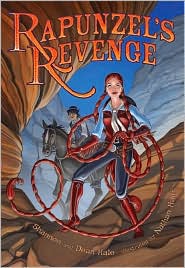Module 15:
Go Ask Alice
Summary: This diary tells the story of an unnamed narrator who goes from a lonely, insecure teenager to a young girl hooked on drugs and the consequences that come with those kinds of decisions.
Citation:
Anynomous. (2006). Go ask alice. New York: Simon Pulse.
Impressions:
It was an interesting book to read and it was interesting to read about all of the controversy as to whether or not the diary was real or fictional. Thousands of teenagers go through a similar spiral in their lives everyday and it is good to be aware of such a problem.
Review:
Amazon.com Review
The torture and hell of adolescence has rarely been captured as clearly as it is in this classic diary by an anonymous, addicted teen. Lonely, awkward, and under extreme pressure from her "perfect" parents, "Anonymous" swings madly between optimism and despair. When one of her new friends spikes her drink with LSD, this diarist begins a frightening journey into darkness. The drugs take the edge off her loneliness and self-hate, but they also turn her life into a nightmare of exalting highs and excruciating lows. Although there is still some question as to whether this diary is real or fictional, there is no question that it has made a profound impact on millions of readers during the more than 25 years it has been in print. Despite a few dated references to hippies and some expired slang, Go Ask Alice still offers a jolting chronicle of a teenager's life spinning out of control. (Retrieved from http://www.amazon.com/Go-Ask-Alice/dp/1416914633/ref=sr_1_1?s=books&ie=UTF8&qid=1291958023&sr=1-1)
Suggestions:
Although this book has often been subject to controversy and many have tried to ban it for various reasons, I still believe that it is an excellent book that shows that there are negative consequences for drug use. The book is filled with sex, drug abuse and most parents don’t agree with how the narrator is constantly disobeying their parents.






